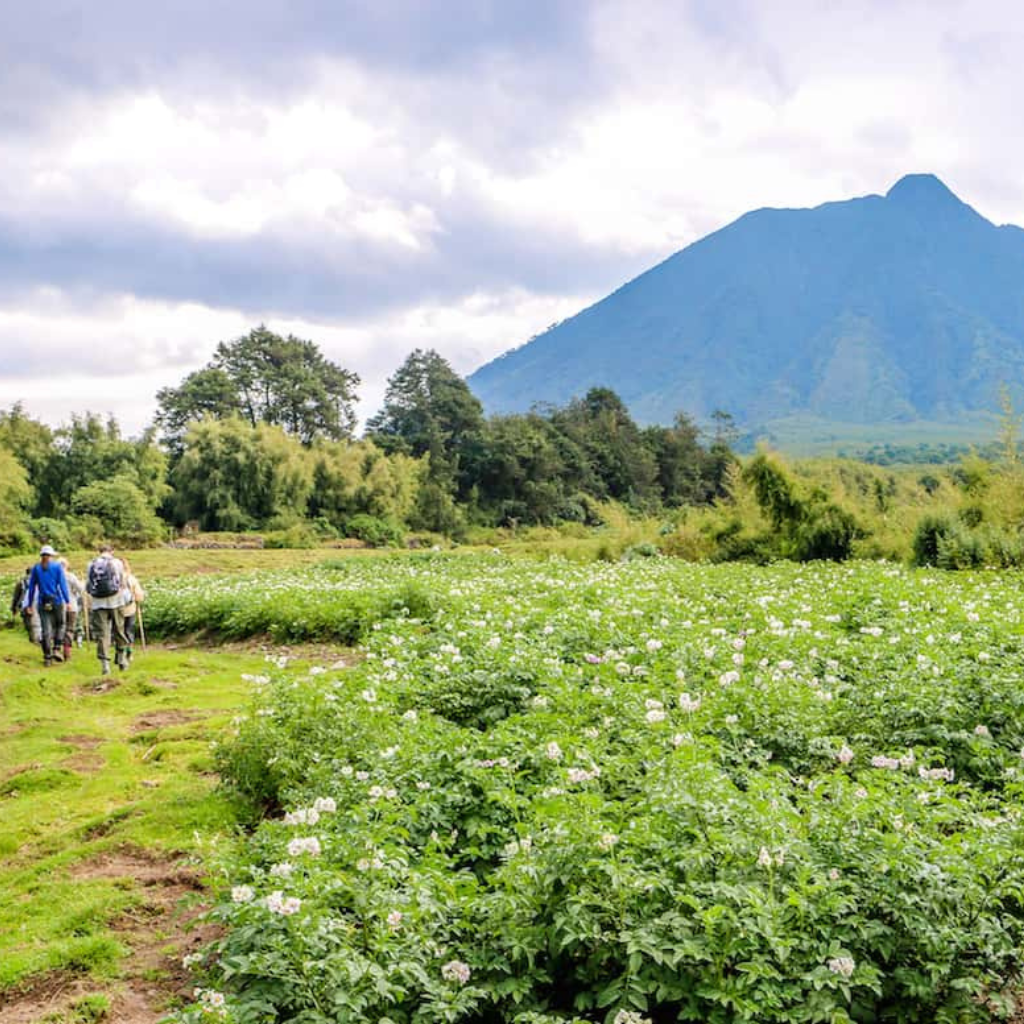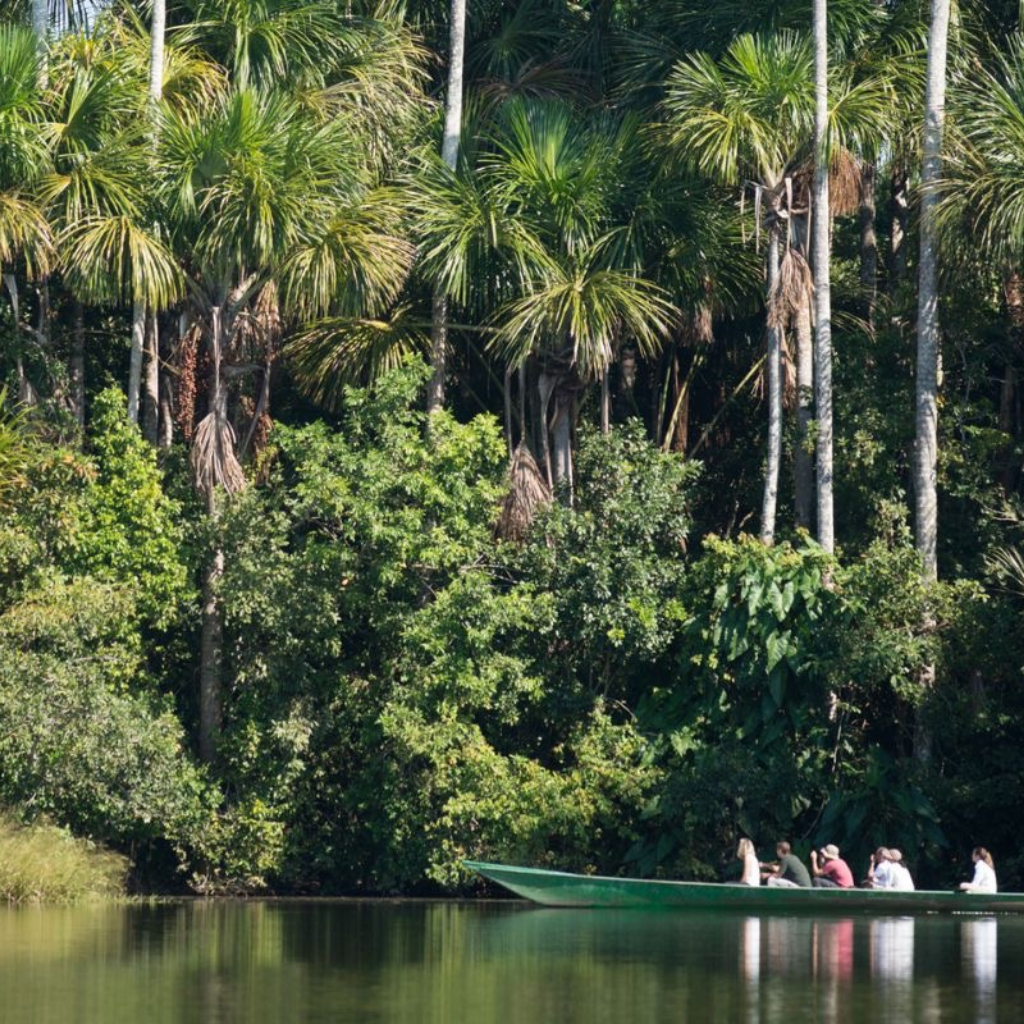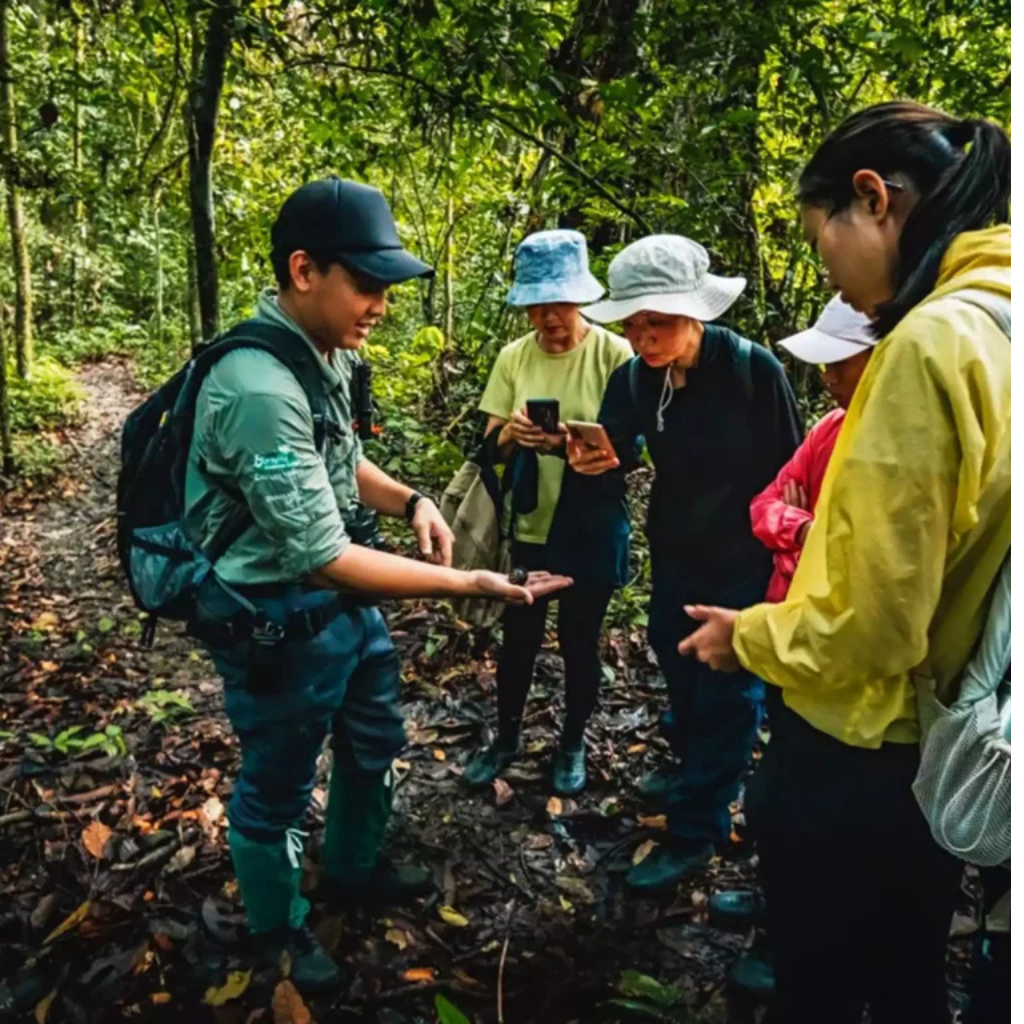
Traveling is one of the greatest joys in life, but have you given any thought to the effects of your adventures on the environment? When we travel whether to Sarajevo, Cappadocia or Chamonix we have many options, from transportation to lodging, that affect the future of the planet. If you’re eager to minimize your carbon footprint and adopt a more conscientious mode of travel, sustainable travel is your jam.
Tourism, they are starting to realize, can leave a heavy environmental footprint. Each year carbon emissions get heavier from atmosphere, from energy used at hotels. So what can you do to make your travel be a little cleaner? How do we see the world without ruining the environment?
In this guide, we’ll explore the journey to becoming a green traveler. You’re looking to book eco-hotels, support green vacations, or even track your own emissions with a carbon footprint calculator, we’ve got you covered. You’ll discover tips on how to choose destinations that promote sustainability, travel in ways that respect nature, and support local communities through mindful practices. Together, we can rethink tourism and create a brighter, more sustainable future for travel. Ready to explore responsibly? Let’s dive in!
1: Choose Sustainable Destinations
When planning your next getaway, have you ever thought about how the destination itself impacts the environment? As a green traveler, the places you choose to visit can have a profound effect on both the local community and the planet. Selecting a sustainable destination is one of the most important ways you can reduce your carbon footprint and contribute to more responsible tourism.
Why Sustainable Destinations Matter
- Environmental Impact: Traditional tourism can harm natural resources, ecosystems, and local communities. By selecting a sustainable destination, you’re helping to preserve these areas for future generations.
- Support for Local Communities: Sustainable destinations promote local businesses and ensure tourism benefits the people living there. This approach leads to better economic conditions and protects the cultural heritage of the area.
- Conservation Practices: Destinations that prioritize sustainability often have strong environmental policies to protect wildlife, reduce waste, and conserve water and energy.
Top Eco-Conscious Countries and Cities

Choosing the right destination can make a world of difference. Here are a few examples of destinations that emphasize sustainability:
- Costa Rica: Known for its biodiversity and eco-tourism initiatives, Costa Rica has become a model for preserving its natural wonders, including rainforests, wildlife reserves, and national parks.
- Iceland: Iceland has committed to using geothermal energy, reducing carbon emissions, and protecting its stunning landscapes, such as glaciers and volcanic fields, with eco-friendly tourism practices.
- Bhutan: This Himalayan kingdom is known for being carbon-negative and prioritizing sustainable travel through government policies that protect both its environment and culture.
How to Research and Identify Sustainable Destinations
To make informed decisions, here are a few ways to research sustainable destinations:
- Look for Eco-Certifications: Many hotels, tour operators, and destinations carry eco-certifications, which indicate they adhere to sustainable practices like energy conservation, waste reduction, and ethical sourcing.
- Check Government Initiatives: Sustainable destinations often have government-backed initiatives aimed at protecting natural resources. Research the policies that support conservation and sustainable tourism efforts in the places you want to visit.
- Use Travel Websites and Reviews: Websites like TripAdvisor, Green Travel Blogs, and eco-focused travel sites often feature reviews on how destinations implement sustainability practices. Look for mentions of eco-friendly accommodations, green tours, and low-impact travel activities.
Choosing a sustainable destination is a powerful step toward more responsible tourism. By doing so, you support eco-friendly practices that help preserve the planet’s precious resources while also enjoying authentic travel experiences.
Why It’s Worth the Effort
When you choose sustainable travel options, you’re not just being a responsible traveler you’re helping ensure that the places you visit remain beautiful and vibrant for generations to come. Supporting sustainable destinations reduces greenhouse gases, protects ecosystems, and promotes local economic growth. In the end, selecting eco-conscious destinations is an investment in the planet’s future and a way to make your travel truly impactful.
2: Reduce Your Carbon Footprint with Smart Transportation

Transportation is one of the largest contributors to global carbon emissions, but as a green traveler, there are several smart choices you can make to minimize your environmental impact.
Consider Alternative Modes of Transportation
- Trains and Buses: When traveling overland, trains and buses are far more eco-friendly than cars or airplanes. They typically emit far fewer greenhouse gases per passenger, helping reduce your overall carbon footprint.
- Cycling: For shorter distances, consider cycling as your mode of transport. It’s an eco-friendly, healthy, and cost-effective way to explore a destination while reducing your environmental impact.
Smart Flying Tips
Flying is often necessary, but there are ways to reduce its environmental impact:
- Choose Direct Flights: Non-stop flights produce fewer emissions than connecting flights, as takeoff and landing consume the most fuel.
- Fly with Green Airlines: Some airlines are more committed to sustainability than others. Look for airlines that prioritize fuel efficiency, use sustainable aviation fuel, and offset their emissions.
- Minimize Air Travel: If possible, reduce the number of flights you take during your travels. Embracing slow travel spending more time in each destination can help you explore in a more sustainable way.
Use Electric Vehicles and Public Transit
- Electric Cars: Many destinations now offer electric vehicles for rent, which significantly reduce greenhouse gases compared to traditional gas-powered cars.
- Public Transit: Make use of buses, trains, and subways to get around your destination. These options often have a much lower environmental impact than private transportation.
Making the right transportation choices helps you minimize your impact on the environment while still getting to explore the world. Whether it’s taking the train, cycling, or choosing airlines that prioritize green initiatives, small adjustments can make a big difference.
3: Stay in Eco-Friendly Accommodations
Where you stay plays a huge role in your environmental impact. Eco-friendly accommodations are designed to reduce resource consumption and minimize waste.
How to Find Green Accommodations
- Look for Eco-Certifications: Many hotels and lodges are certified by organizations like Green Key or EarthCheck, ensuring they adhere to environmental standards in areas like energy use, waste management, and water conservation.
- Research Sustainable Practices: When choosing an accommodation, check if they offer sustainable amenities like energy-efficient lighting, low-flow showers, and waste reduction programs.
- Support Locally-Owned Businesses: Staying in locally owned accommodations helps ensure that your stay benefits the local economy and minimizes the environmental impact of large hotel chains.
Examples of Eco-Friendly Accommodations
- Eco-Lodges in Costa Rica: These lodges are designed to blend into the natural surroundings and typically feature renewable energy sources, composting toilets, and water-saving measures.
- Green Hotels in Iceland: Many hotels in Iceland use geothermal energy and practice waste sorting and recycling to minimize environmental impact.
By staying in eco-friendly accommodations, you’ll be making an eco-conscious decision that not only benefits the environment but also enhances your travel experience. You’ll feel good knowing your lodging is working to reduce its environmental footprint.
The steps above highlight how you can begin your green travel journey by making mindful decisions about where you go, how you travel, and where you stay. Each choice makes a difference in reducing your overall environmental impact while allowing you to enjoy meaningful, authentic travel experiences.
4: Pack Light and Smart

When it comes to sustainable travel, the weight of your luggage matters more than you might think. The lighter your luggage, the less fuel your mode of transport will consume. Packing light can be one of the easiest and most effective ways to reduce your carbon footprint and minimize your impact on the environment.
Why Packing Light Helps
- Fuel Efficiency: The heavier your luggage, the more energy is required to transport it. Whether you’re flying, driving, or taking a train, less weight means less fuel consumption.
- Less Waste: Packing light often leads to using fewer disposable items, which helps reduce the waste that ends up in landfills.
Tips for Efficient Packing
- Choose Versatile Clothing: Instead of packing multiple outfits, choose clothing items that can be mixed and matched. Opt for versatile pieces that can be worn for different occasions.
- Avoid Single-Use Plastics: Bring reusable bags, bottles, and containers to avoid single-use plastics that contribute to pollution. You can also pack reusable cutlery and straws for meals on the go.
- Pack Eco-Friendly Products: Choose toiletries and items that are biodegradable and free from harmful chemicals. Look for products with minimal packaging, such as bar soap instead of bottled shampoo.
How to Minimize Luggage Weight Without Compromising Essentials
- Use Packing Cubes: Packing cubes help organize your luggage while maximizing space, making it easier to pack fewer items.
- Roll Clothes: Instead of folding clothes, roll them. This method not only saves space but also reduces wrinkles, so you’ll spend less time ironing.
- Limit Electronics: Consider leaving unnecessary gadgets at home. Each electronic device adds weight to your luggage and requires energy to charge.
By packing light and smart, you’ll reduce the overall weight of your luggage, which not only saves energy but also contributes to a cleaner, greener travel experience.
5: Go Plastic-Free: Use Reusable Items

Plastic pollution is one of the biggest environmental challenges we face today, and it’s particularly harmful to marine life. As a green traveler, making the decision to go plastic-free can significantly reduce your environmental impact while on the road.
The Problem with Single-Use Plastics
Single-use plastics, such as water bottles, straws, and shopping bags, are designed to be used once and discarded. Unfortunately, most of them end up in landfills or oceans, where they can take hundreds of years to decompose. In fact, millions of tons of plastic waste are generated by the tourism industry each year.
The Benefits of Bringing Your Own Reusable Items
- Water Bottles: Instead of buying bottled water, bring your own reusable water bottle. Many airports, hotels, and public spaces now provide refill stations, making it easy to stay hydrated without creating waste.
- Shopping Bags: Always carry a reusable shopping bag when you’re out exploring. Say no to plastic bags, and instead, use fabric or foldable bags that you can carry with you at all times.
- Reusable Cutlery: Avoid using disposable plastic utensils when you buy food on the go. Pack your own reusable cutlery set to use during meals.
Sustainable Alternatives to Common Travel Items
- Bamboo Toothbrushes: Ditch the plastic toothbrush and opt for a bamboo one. These are biodegradable and just as effective at keeping your teeth clean.
- Refillable Toiletries: Instead of purchasing small, disposable bottles of shampoo and conditioner, opt for refillable containers or solid toiletries like bar soap and shampoo bars.
By using reusable items, you’ll not only reduce plastic waste but also encourage others to follow suit. It’s a simple yet powerful way to contribute to a more sustainable travel experience.
6: Support Local Businesses and Sustainable Tourism Initiatives

Traveling to new places gives you the opportunity to experience different cultures and support the local economy. As a green traveler, one of the best ways to make a positive impact is by supporting local businesses and choosing sustainable tourism initiatives that prioritize ethical practices and environmental protection.
How Supporting Local Businesses Helps
- Sustainable Economy: When you support locally-owned businesses such as family-run restaurants, local artisans, and eco-conscious tour operators you help keep money in the community. This ensures that tourism benefits the people who live there, rather than large multinational corporations.
- Cultural Preservation: Local businesses often help preserve the traditions, arts, and crafts of a destination. By choosing to support them, you help sustain these cultural practices for future generations.
Look for Tours and Activities That Promote Sustainability
- Eco-Friendly Tours: Choose tour operators that focus on conservation, wildlife protection, and promoting responsible tourism practices. Opt for eco-tours that don’t exploit animals or natural resources.
- Cultural Heritage Preservation: Look for activities that celebrate local cultures and traditions while ensuring that tourism doesn’t harm their authenticity or integrity.
By supporting local businesses and sustainable tourism initiatives, you’re contributing to a more ethical and eco-conscious way of exploring the world. It’s a win-win: you get to experience the best of a destination while helping to ensure it remains vibrant and sustainable.
7: Practice Responsible Wildlife Tourism
Wildlife tourism can be a rewarding experience, but it’s important to choose experiences that respect the well-being of animals and their natural habitats. As a green traveler, responsible wildlife tourism should be at the forefront of your travel choices.
The Importance of Ethical Wildlife Tourism
- Avoid Exploitation: Sadly, many wildlife experiences around the world exploit animals for entertainment, leading to mistreatment and often harming the species in the long run. Always ensure that the wildlife experiences you choose follow ethical guidelines.
- Conservation Efforts: Ethical wildlife tours promote conservation and protect endangered species by ensuring animals live in their natural habitats without being disturbed by human interaction.
How to Choose Responsible Wildlife Experiences
- Wildlife Safaris: Opt for safaris that follow ethical guidelines, focusing on observing animals in their natural environment rather than participating in activities that harm them.
- Whale Watching: Choose tours that follow responsible practices to minimize disturbances to marine life. Look for operators who follow guidelines that keep a safe distance from the animals and ensure their safety.
Responsible wildlife tourism is an opportunity to learn, observe, and protect animals in their natural habitats. By making the right choices, you contribute to the preservation of these incredible species for generations to come.
By following these steps, you’ll be well on your way to becoming a green traveler who is mindful of the environmental impact of each aspect of your journey. Whether you’re packing light, reducing plastic use, or supporting local businesses, every decision you make matters. The more sustainable travel practices you adopt, the more positive impact you’ll have on the planet.
8: Conserve Water and Energy While Traveling

As a green traveler, one of the easiest ways to make a positive environmental impact is by conserving water and energy during your trip. Small, thoughtful actions in your accommodations and daily routines can go a long way in reducing your environmental impact and helping protect valuable resources.
Easy Actions to Conserve Water
- Take Shorter Showers: One of the simplest ways to save water is by reducing shower time. If you can cut your shower by a few minutes, you’ll save gallons of water every day.
- Turn Off Faucets When Not in Use: Whether you’re brushing your teeth, washing your face, or doing dishes, always turn off the faucet when you’re not actively using water. It’s a simple habit that can save a significant amount of water over time.
- Reuse Towels and Linens: Many hotels and accommodations offer the option to reuse towels and linens during your stay. Instead of asking for fresh towels daily, take advantage of this option to reduce water consumption and avoid unnecessary laundry.
How to Conserve Energy While Traveling
- Turn Off Lights and Electronics: When you leave your room, make sure to turn off all lights, air conditioning, and electronics. Unplug devices that aren’t in use to reduce energy consumption.
- Opt for Natural Light: During the day, use natural sunlight whenever possible. Open the curtains and enjoy the free, clean energy of the sun instead of relying on artificial lighting.
- Use Energy-Efficient Accommodations: Choose eco-friendly accommodations that implement energy-saving technologies like LED lighting, smart thermostats, and solar panels. Many hotels and lodges have adopted energy-efficient practices that make a big difference in overall energy use.
Encourage Others to Practice Conservation
By making water and energy conservation a priority, you not only reduce your own impact, but you can also inspire others to do the same. When traveling with family or friends, lead by example and encourage them to adopt conservation habits as well. Little changes, when practiced by everyone, can add up to make a big difference.
Conserving water and energy might feel like small steps, but collectively, these actions contribute to a much larger positive environmental impact. By being mindful of your resources while traveling, you’ll help ensure the destinations you visit stay beautiful and sustainable for years to come.
9: Embrace Slow Travel
In today’s fast-paced world, it’s easy to rush through multiple destinations in a short amount of time, but there’s a better way to travel slow travel. This mindful approach to travel not only allows you to experience destinations more deeply but also helps minimize your carbon footprint and promotes a more sustainable way of exploring the world.
What is Slow Travel?
Slow travel is about focusing on fewer destinations and spending more time in each one. Instead of rushing from one city to the next, you stay longer in a place, allowing yourself the time to truly immerse in the culture, connect with locals, and explore at a more relaxed pace. This approach allows you to savor your surroundings and enjoy a deeper connection with the destination.
Why Slow Travel Reduces Your Environmental Impact
- Fewer Flights: By spending more time in one location, you reduce the need for multiple flights, cutting down on air travel and its associated carbon emissions.
- More Local Exploration: Slow travel encourages you to explore a destination more thoroughly, often by walking, cycling, or using public transportation, all of which have lower environmental impacts than taxis or rental cars.
The Benefits of Slow Travel
- Deeper Cultural Immersion: With more time to spend in one place, you can engage more meaningfully with local culture. You can visit local markets, try authentic food, and learn about traditions that you would miss if you were rushing.
- Supporting Local Economies: Longer stays mean you’re more likely to support local businesses, restaurants, and services, which boosts the economy and promotes sustainability within the community.
- Less Stress: Slow travel offers a break from the hustle of typical vacations. You can enjoy a more relaxed experience and focus on the quality of your journey rather than the quantity of destinations.
Embracing slow travel offers a variety of benefits, both for you and the environment. By taking the time to truly appreciate a destination, you can minimize your impact and enjoy a more sustainable, enriching travel experience.
10: Offset Your Carbon Emissions
Even the most eco-conscious travelers will produce some carbon emissions during their trips, particularly if flying is involved. Fortunately, there are ways to offset these emissions and reduce your overall environmental impact.
What is Carbon Offsetting?
Carbon offsetting is the practice of compensating for the carbon emissions produced by your travel by investing in projects that reduce or remove an equivalent amount of CO2 from the atmosphere. These projects might include renewable energy initiatives, reforestation, or methane capture projects, all of which work to balance out the environmental impact of your travel.
Different Ways to Offset Emissions
- Purchase Carbon Credits: Many organizations offer carbon credits that allow you to fund projects designed to reduce emissions. You can calculate your emissions from flights and other travel activities and buy the corresponding number of credits to offset them.
- Invest in Renewable Energy: Contributing to projects that support the development of renewable energy like solar, wind, or hydroelectric power is another way to offset your emissions.
- Reforestation Projects: Planting trees is one of the most effective ways to absorb CO2 from the atmosphere. Look for organizations that support reforestation or forest conservation projects to invest in long-term solutions for reducing carbon.
How to Calculate and Offset Your Emissions
- Carbon Footprint Calculator: Before purchasing carbon credits, use a carbon footprint calculator to estimate the total emissions from your travel. Many online tools can help you figure out how much CO2 your flights and transportation will generate.
- Offset at the Time of Booking: Some airlines and travel companies now offer the option to offset your carbon emissions at the time of booking. This makes it easy to contribute to offsetting projects before you even board your flight.
By offsetting your carbon emissions, you are taking responsibility for the environmental impact of your travel and supporting projects that actively reduce global emissions. While it’s not a perfect solution, it’s an important step toward mitigating the effects of travel and contributing to a more sustainable future.
Through each of these steps, it’s conserving resources, embracing slower travel, or offsetting carbon emissions, you can make meaningful contributions toward a more sustainable travel experience. The choices you make while traveling can have a lasting impact on the world, and by being mindful of your actions, you become part of the solution for a greener, more responsible travel industry.
Conclusion: Your Journey to Sustainable Travel Starts Now
As you wrap up your journey through these 10 steps to becoming a green traveler, it’s time to reflect on the powerful changes you can make not just in the way you travel, but in the way you interact with the world. Every decision you make, from choosing sustainable destinations to supporting local businesses and offsetting your carbon footprint, contributes to a more responsible and sustainable travel industry.
Think about it: you’re not just a tourist. You’re a green traveler someone who makes mindful choices that protect the environment and celebrate the beauty of sustainable tourism. Every step you take matters, and each small decision adds up to a significant change. From now on, when you pack your bags, you’ll not only be carrying your essentials you’ll be carrying the responsibility of making the world a better place, one trip at a time.
So, how will you make your next adventure more sustainable? Whether it’s opting for green vacations that prioritize conservation or choosing to reduce your carbon emissions through smart transportation, you have the power to create positive impact. And by continuing to learn and grow as a responsible traveler, you’ll inspire others to follow in your footsteps.
Let’s keep the momentum going. Let’s rethink tourism and choose a travel lifestyle that fosters cultural connection, environmental preservation, and sustainability. Are you ready to take the next step? Your journey to greener, more mindful travel starts now. 🌍✈️
Related blog post
10 Safety Tips for Hiking Alone as a Woman (2025)
Empower Your Wanderlust: Explore Solo Travel Female Packages International (2025)
